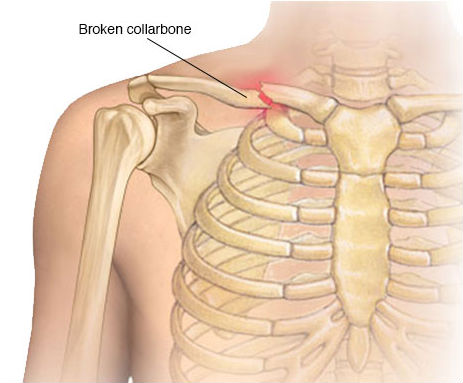Top 10 Shoulder Pain Causes
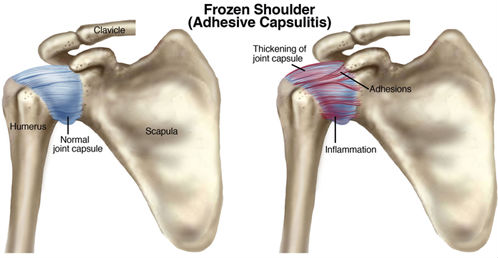
Frozen Shoulder
Frozen shoulder is the common name for adhesive capsulitis, which is a shoulder condition that limits your range of motion.
When the tissues in your shoulder joint become thicker and tighter, scar tissue develops over time.
Frozen shoulder is the result of inflammation, scarring, thickening and shrinkage of the capsule that surrounds the normal shoulder joint.
Any injury to the shoulder can lead to a frozen shoulder, including tendinitis, bursitis and rotator cuff injury (rotator cuff syndrome). Our joint and bone specialist in Penang will be able to treat your frozen shoulder.
Shoulder Tendonitis
Shoulder tendonitis (or tendinitis) is an inflammation injury to the tendons of your shoulder's rotator cuff.
Because inflammation is not always present in injuries to the shoulder tendons, this group of injuries are medically known as a rotator cuff tendinopathy or tendinopathies.
Some of the symptoms of shoulder tendonitis :
- pain and swelling in the front of your shoulder and side of your arm- pain triggered by raising or lowering your arm
- a clicking sound when raising your arm
- stiffness
- pain that causes you to wake from sleep
- pain when reaching behind your back
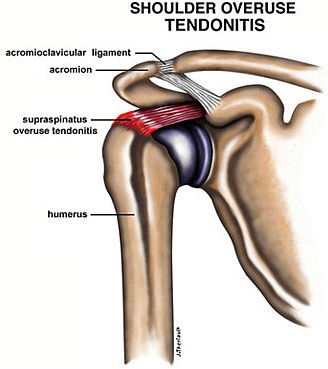
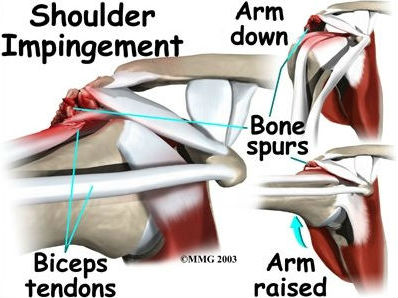
Shoulder Impingement
Shoulder impingement syndrome, also called subacromial impingement, painful arc syndrome, supraspinatus syndrome, swimmer's shoulder and thrower's shoulder, is a clinical syndrome which occurs when the tendons of the rotator cuff muscles become irritated and inflamed as they pass through the subacromial space which is the passage beneath the acromion. This can result in shoulder pain, weakness and loss of movement at the shoulder. The bursa can become inflamed and swell with more fluid causing pain and impingement.
When you raise your arm to shoulder height, the space between the acromion and rotator cuff narrows. The acromion can rub against (or "impinge" on) the tendon and the bursa, causing irritation and pain.
A shoulder pain specialist in Penang like a professional chiropractor will be able to treat shoulder impingement with chiropractic care.
Shoulder Bursitis
A bursa is a tiny fluid-filled sac that functions as a gliding surface to reduce friction between tissues of the body.
The plural of bursa is bursae. Bursitis is inflammation of a bursa.
Injury or inflammation of a bursa around the shoulder joint causes shoulder bursitis.
When shoulder bursitis develops, it can cause symptoms such as shoulder pain that gradually gets worse or pain that is triggered by movement, such as lifting your arm above your head. This is similar to osteoarthritis.
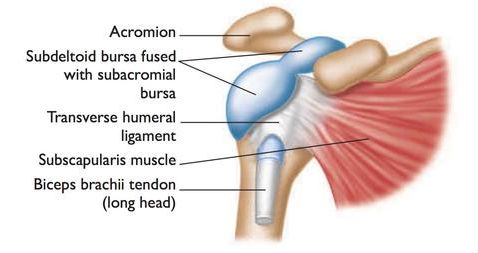
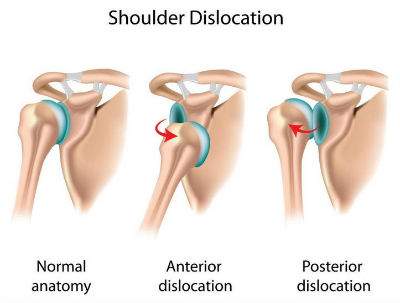
Shoulder Dislocation
The shoulder joint is the body's most mobile joint. But this advantage also makes the shoulder an easy joint to dislocate.
A partial dislocation (subluxation) means the head of the upper arm bone (humerus) is partially out of the socket (glenoid).
Extreme rotation of your shoulder joint can pop the ball of your upper arm bone out of your shoulder socket.
Partial dislocation in which your upper arm bone is partially in and partially out of your shoulder socket may also occur.
A dislocated shoulder may be caused by sports injuries. These are the top 10 most common sports injuries experienced by athletes and folks.
Shoulder Osteoarthritis
Osteoarthritis of the shoulder is a gradual wearing of the articular cartilage that leads to pain and stiffness. As the joint surface degenerates, the subchondral bone remodels, losing its sphericity and congruity. The joint capsule also becomes thickened, leading to further loss of shoulder rotation.
Shoulder osteoarthritis is a degenerative joint disease that involves two primary processes:
- abnormal bony growths, called osteophytes or bone spurs, develop in the joint
Those experiencing shoulder pain in Penang can seek non-surgical Gonstead chiropractic Malaysia treatment by a professional Penang chiropractor.
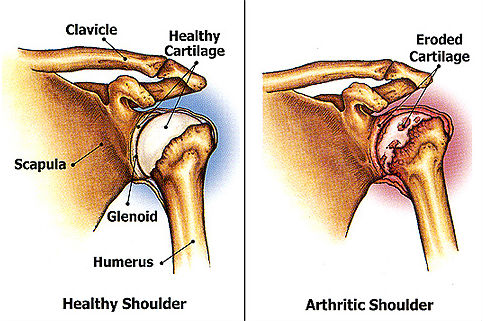
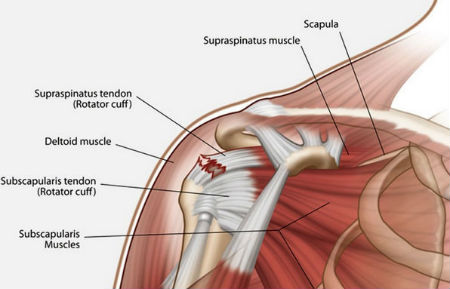
Rotator Cuff Tear
A rotator cuff tear is a tear of one or more of the tendons of the four rotator cuff muscles of the shoulder.
A rotator cuff 'injury' can include any type of irritation or overuse of those muscles or tendons, and is among the most common conditions affecting the shoulder.
The most common symptom of rotator cuff tear arthropathy is pain in and around the shoulder. The pain can also radiate into your neck, arm, even into your wrist or hand.
The shoulder can be especially painful when trying to lift the arm, or rotate it outward. The shoulder pain is usually worse at night.
Labral Tear
The labrum is a piece of fibrocartilage (rubbery tissue) attached to the rim of the shoulder socket that helps keep the ball of the joint in place.
When this cartilage is torn, it is called a labral tear.
Labral tears may result from injury, or sometimes as part of the aging process. Labral tears are often caused by a direct injury to the shoulder, such as falling on an outstretched hand.
The labrum can also become torn from the wear and tear of activity, a condition called overuse. An injured labrum can lead to shoulder instability. This can also cause the labrum to tear.
Getting the best chiropractic Malaysia treatment in Penang will help to ensure the shoulder heals well with full range motion.
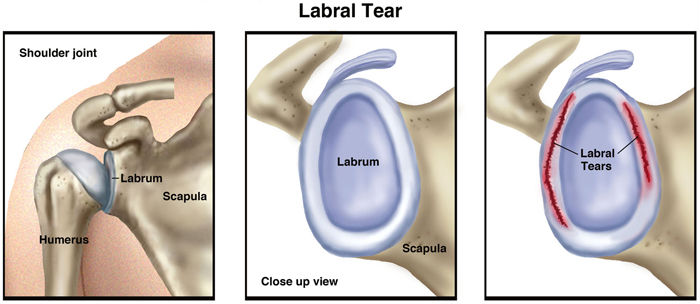
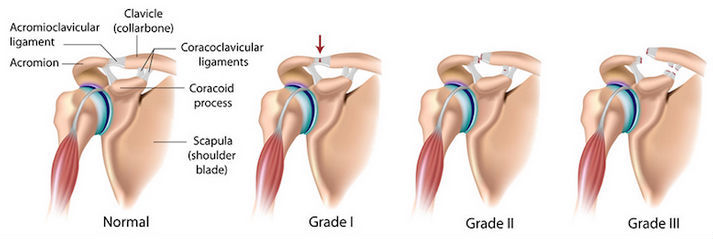
Separated Shoulder
A separated shoulder is an injury to the ligaments that hold your collarbone (clavicle) to your shoulder blade.
In a mild separated shoulder, the ligaments might just be stretched.
In severe injuries, ligaments might be torn.
Signs and symptoms of a shoulder separation include:
- pain at the moment the injury occurs- limited movement in the shoulder area (because of pain, not weakness)
- swelling and bruising
- tenderness over the AC joint on top of the shoulder
- possible deformity
Broken Collarbone
Treatment for a broken collarbone usually requires a sling or figure-of-eight splint to keep the area immobile for several weeks.
In some cases, surgery may be required. Most clavicle fractures heal within 4 to 8 weeks.
Signs and symptoms of a broken collarbone include:
- pain that increases with shoulder movement- swelling
- tenderness
- bruising
- a bulge on or near your shoulder
- a grinding or crackling sound when you try to move your shoulder
- stiffness or inability to move your shoulder
